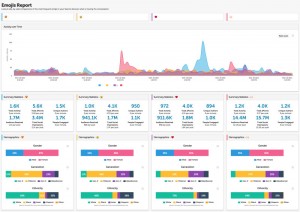CTV: Quantifying Non-Performance In Performance Media

Connected television (CTV) took on a vibe of performance media as it matured, with more ad dollars flowing into the channel despite slowing growth in the years to come.
U.S. brands are forecast to spend more than $28 billion in 2024, rising to $32.57 in 2025, according to Emarketer. CTV comprises one-third of the total spent on TV advertising for both CTV and linear, but the analyst firm expects that growth to slow from 13.3% to 12.1%, respectively.
BrightLine, a platform for interactive streaming ads, measured the impact of interactive CTV advertising to help quantify the non-performance metrics, which it insists is just as important to brands. The survey was conducted with MediaScience, a neuromarketing audience-research company.
Joshua Blum, director of research & Analytics at BrightLine, said the key takeaway from the data is that interactive ads drive recall, and becomes a proxy for what could connect to sales. Interactive ads do lead to purchases further down funnel, even though what the data shows is upper-funnel metrics.
CTV, increasingly viewed as a performance media channel, combines TV screen formats with data-driven marketing. It allows advertisers to target specific audiences based on demographics, interests, and behaviors, and then measure the results of campaigns.
The research shows interactive CTV ads represent a shift from passive viewing to active engagement.
It suggests that streaming is expected to reach about 55 million viewers in 2024. So what is the impact of interactive streaming overlays? The study compares the relative impact of one exposure to either a standard video or interactive ad when viewed individually and then when paired together.
When paired together, two ad formats lead to significant lifts in unaided, aided and message recall metrics for interactive ads.
One exposure to an interactive ad led to more than 36% stronger unaided brand recall than one exposure to a standard video unit.
Four-fifths of viewers were able to correctly identify the advertiser. Unaided recall returned 48% for standard video and 65% for interactive ad. Aided recall returned 72% for standards video and 79% for interactive ad, but Message recall returned 17% for standard video and 16% for interactive ad.
When pairing two ad formats it led to significant lists in all three memory recall metrics, including 58% stronger unaided recall and 47% higher message recall, but only 22% in aided recall.
Two exposures of the interactive ad also increase unaided and aided recall metrics further than one alone.
The data also shows 19% stronger unaided recall, 11% aided recall, and 0% for message recall.
Some 36% have stronger top-of-mind brand recall with one interactive ad versus a traditional 30-second spot, while 58% see a top-of-mind brand recall boost when interactive meets traditional, and 83% of viewers prefer remote-control action.
(5)
Report Post




